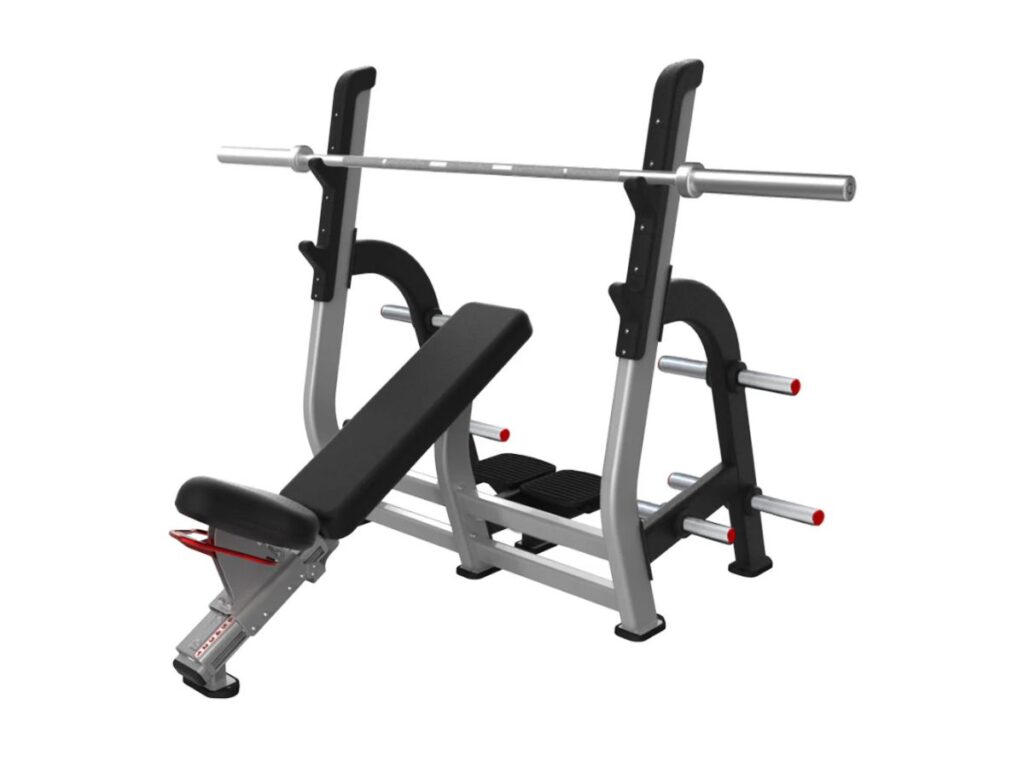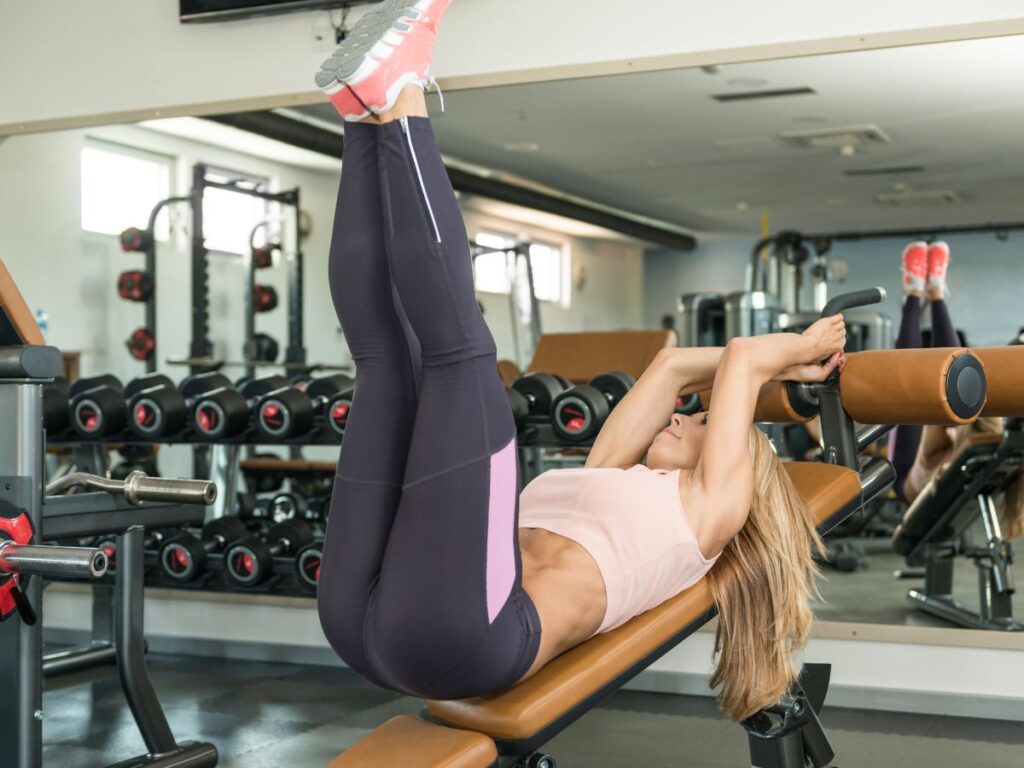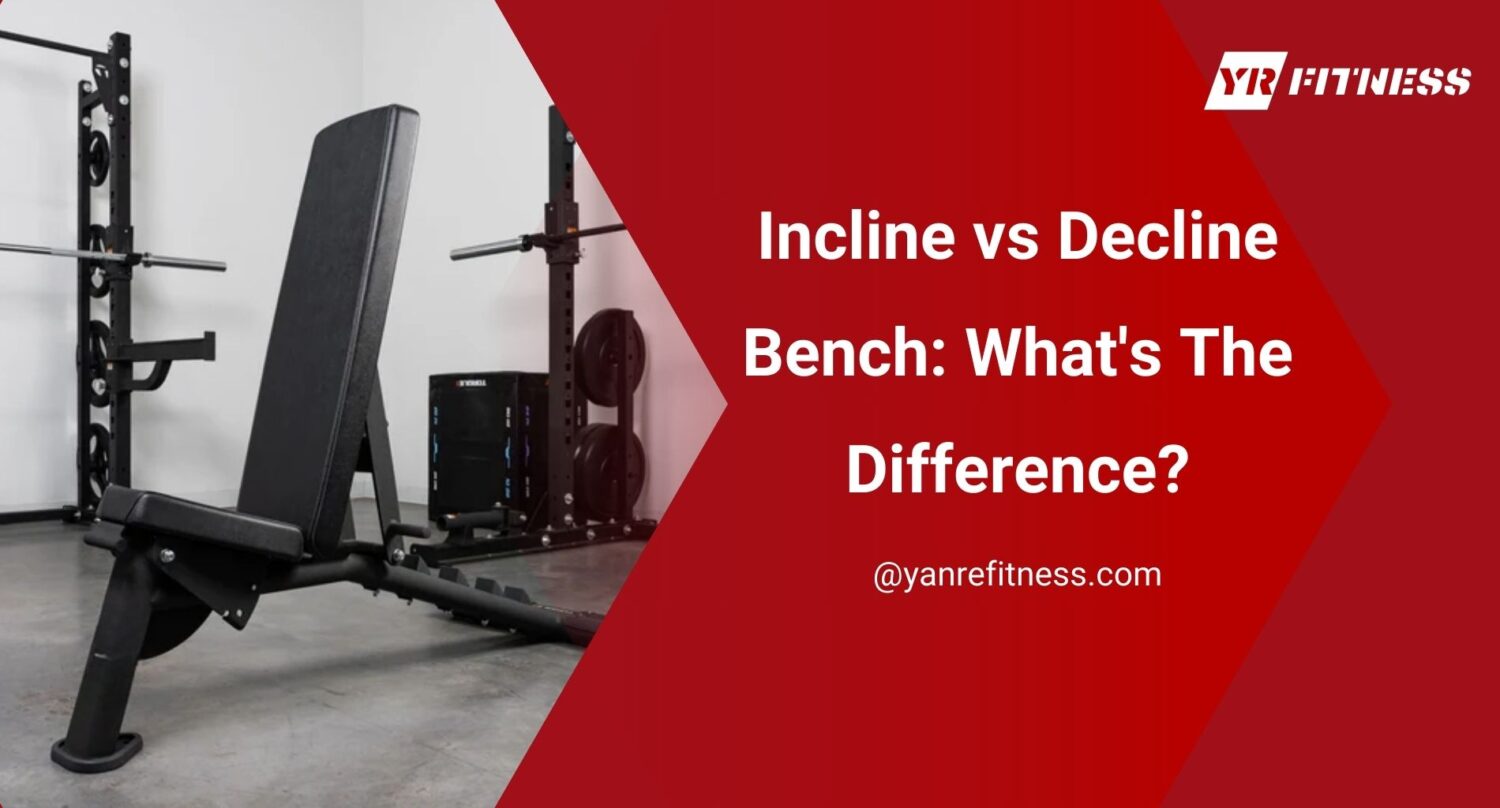When I opened my first gym, I didn’t overthink the benches.
I bought one incline and one decline. They looked strong. I assumed that was enough.
But after a few months, I noticed something.
One of those benches barely got used. Members ignored it, even when the others were full.
That taught me something important: not all benches serve the same purpose, and not every bench fits every gym.
Since then, I’ve tested different setups, learned what people actually use, and made better choices.
This article explains the real difference between incline and decline benches. You’ll learn what each one does, which muscles they target, and where they make sense in a gym setup.
If you’re deciding what to buy for your gym, this guide will help you make a clear, confident choice.
Let’s dive in!
Table of Contents
1. What Is an Incline Bench?
The first time I tried an incline bench, I thought it was just a tilted version of the flat bench. I didn’t realize how much it would change the way my upper chest felt the next day.
An incline bench is simple. It has a backrest that tilts upward—usually between 30 and 60 degrees. That angle shifts the focus of your lifts. Instead of hitting the middle chest, it moves the work to your upper chest, shoulders, and triceps.
If your members say their chest workouts feel “flat,” this might be exactly what’s missing.
Common Exercises
- Incline Bench Press: Builds upper chest and shoulder strength. Can be done with barbells or dumbbells.
- Incline Flys: Stretches and isolates the upper chest through a wide range of motion.
- Incline Curls: Keeps arms locked in place to better isolate the biceps.
- Incline Shoulder Press: Focuses more on front shoulders than a standard press.
User Demographic
Incline benches are well-used by:
- Bodybuilders: Use it to shape and fill out the upper chest.
- Strength trainers: Add it to push power from different angles.
- Everyday lifters: Appreciate the variety and upper-body development.
Is your current setup giving members the variety they need for upper-body work? An incline bench might be the missing piece. Additionally, if you are looking for a wide range of gym equipment to choose from, at YR Fitness, we offer durable, commercial-grade benches, racks, dumbbells, and strength machines built for daily use and long-term performance.

2. What Is a Decline Bench?
I used to avoid the decline bench. It looked awkward, and I didn’t think it was all that useful.
But the first time I gave it a real shot, I felt the difference right away—especially in my lower chest.
A decline bench is built with the backrest tilted downward, usually between 15 and 30 degrees. That downward angle shifts your body position so your legs are higher than your head. It feels strange at first, but it has a clear purpose.
The decline bench targets the lower chest, while also bringing in the triceps and shoulders. Because of the angle, it can also reduce shoulder strain for some lifters, especially compared to flat or incline presses.
Common Exercises
- Decline Bench Press: Builds the lower chest using a barbell or dumbbells.
- Decline Flys: Targets the lower chest with an isolated movement.
- Decline Sit-ups: Uses the decline angle to increase core challenge.
- Decline Skull Crushers: Triceps-focused movement with a slight variation in angle.
User Demographic
Decline benches are often used by:
- Bodybuilders: Add lower chest size and shape.
- Lifters with shoulder concerns: Prefer this angle to reduce pressure.
- Intermediate to advanced users: Those looking to round out their chest development.
Do your members ask about hitting the lower chest more effectively?
If so, a decline bench could be exactly what they’re missing in their routines.

3. Equipment Versatility and Usage Frequency
One of the biggest takeaways from managing a gym is this: some equipment drives value daily, while others just take up floor space. Benches, in particular, fall into this pattern. The difference in how incline and decline benches are used—and how often—can directly affect your layout decisions and return on investment.
Incline Bench Versatility
Incline benches are among the most frequently used strength training tools in commercial gyms. Their angled design makes them ideal for targeting the upper chest, shoulders, and triceps, which aligns with many common training goals. They’re also easy to include in full-body routines.
Their flexibility allows for a wide variety of movements like presses, flies, curls, and shoulder exercises—similar to how versatile tools like a power cage or squat rack adapt to strength routines across all levels, from beginners to advanced lifters.
Decline Bench Versatility
While decline benches have a clear role—mainly in targeting the lower chest and engaging core muscles—their usage tends to be more limited. They are often used for decline bench presses or decline sit-ups, but rarely beyond that. Most gym users do not include decline variations in their weekly programs unless instructed by a trainer.
Usage Data in Commercial Gyms
From both firsthand experience and industry feedback, the pattern is consistent: incline benches are heavily used across different fitness levels and programs, while decline benches serve a smaller, more specialized group.
In busy gyms, incline benches are often occupied back-to-back, while decline benches may sit idle for long periods. If space and budget are limited, prioritizing based on usage frequency can help you make more efficient purchasing decisions that better serve your members.

4. Footprint and Space Efficiency
Not all benches work well in every gym layout. That’s something I learned after watching members shift, wait, and walk around equipment that looked fine on paper—but didn’t function well in practice.
A bench might seem like a small footprint item. But in a busy gym, every inch counts.
Dimensions and Layout Planning
Incline and decline benches are roughly the same size, typically measuring between 4.5 to 5 feet in length and around 2 feet in width. But the impact on layout depends less on dimensions and more on frame design.
Adjustable incline benches offer more flexibility. Many fold into a vertical position or flatten out, allowing you to free up space when they’re not in use.
In contrast, fixed-frame benches—including most decline models—take up that full footprint all day, every day.
Storage and Mobility
Equipment that moves easily makes daily operations smoother.
Most incline benches, especially adjustable types, are designed with that in mind. Built-in wheels, lightweight frames, and upright storage options make them easier to shift between zones or store temporarily.
Decline benches usually lack that mobility. Because of their leg support systems and heavier frames, they’re more awkward to lift, turn, or store.
Repositioning them takes time and staff effort—something that adds up in busy environments.
Gym Layout Considerations
Incline benches blend easily into most gym layouts. They work well between squat racks, in dumbbell areas, or near cable machines. Their footprint is predictable and doesn’t interfere with member movement.
Decline benches, however, often need dedicated floor space to function properly. The leg anchors extend out and require extra room around the foot end. Without enough clearance, they can cause congestion, especially during peak hours.

5. Safety Considerations
No matter how strong your members are, safety always comes first. I’ve seen too many lifters get hurt just because a bench didn’t fit them right—or didn’t have the right setup.
Some benches are easier to handle. Others demand more support, especially when the angle shifts your body position.
User Positioning and Stability
Incline benches offer better visibility and control. The upward angle lets users clearly see the bar path and rack position. That helps them unrack and rerack safely—especially when training alone.
Decline benches are trickier. Because the body leans downward, lifters need to anchor their legs using padded rollers. That position can feel unstable, especially for beginners. It’s also harder to spot the bar path, which makes a spotter more important during heavier lifts.
Injury Risks
Incline benches carry a small risk of shoulder strain, especially if the bench is set too high or if the lifter overextends during the press.
Decline benches come with a different challenge. Some users experience dizziness or neck pressure due to the downward angle. If the movement isn’t controlled, it can also increase the chance of dropping the bar during the lift.
Safety Features to Consider When Buying
- Incline models: Look for solid backrest locks and adjustable bar catches
- Decline models: Choose benches with secure leg rollers and thick padding for comfort and stability
6. Maintenance Requirements
Maintenance might not be the most exciting part of running a gym, but it’s one of the most important. A worn bench or loose pin can turn into a safety issue fast—and members will notice.
I’ve had benches squeak, shift, or even fail mid-use. Since then, I’ve made it a habit to check my equipment weekly. The better shape your benches are in, the longer they’ll last and the safer your space will be.
Category | Incline Bench | Decline Bench |
Wear and Tear Points | – Bench pad may split or flatten over time – Locking pins can loosen or jam – Frame bolts may shift with use | – Bench pad can degrade with repeated ab work – Leg rollers wear faster – Frame bolts need checking periodically |
Specific Maintenance Needs | – More moving parts (hinges, tracks, pins) – Requires regular checks on adjustability – Rust or dirt can affect the mechanism | – Fewer moving parts – Leg rollers require closer monitoring – Simpler design but still needs attention |
Ease of Repair | – Parts like pins and pads are easy to replace – In-house staff can handle most fixes | – Leg rollers and pads can be swapped easily – Minimal outside help needed |
Staff Involvement | – Weekly inspection recommended, especially in high-traffic gyms | – Weekly check of rollers and frame is usually enough |
Member Feedback Risks | – Locking failure may cause bench instability – Rusted tracks may impact usability | – Worn rollers cause discomfort – Loose parts may lead to members skipping it |
7. Cost and ROI
In any gym setup, benches are one of the first purchases. But the question isn’t just how much does it cost?—it’s how much will it return over time?
I’ve spent more upfront on quality benches that got daily use and gave better ROI. I’ve also saved money on cheaper ones that just sat in the corner.
Initial Equipment Cost
Incline benches, especially adjustable commercial-grade models, typically range from $400 to $1,200 USD depending on brand, build quality, and features. More angles, thicker frames, and mobile-friendly designs usually push the price higher.
Decline benches tend to cost less. Most fall between $250 to $700 USD. They have fewer moving parts, simpler construction, and are often sold as secondary or specialty units.
Usage-to-Cost Ratio
The incline bench is one of the most used benches on the gym floor. Its range of use—from presses to curls—justifies the higher cost. Members across all fitness levels use it regularly, which shortens the payback window.
Decline benches are more specialized. Unless your members specifically train for lower chest or core strength, these benches may see lighter traffic. That means the return on investment takes longer, and the value per square foot is lower.
Long-Term Return on Investment
Incline benches contribute more consistently to daily training sessions. Because they support so many movement types, they keep members engaged and satisfied. That ongoing use supports a stronger long-term ROI.
Decline benches work best when added to an already well-equipped gym. They’re useful—but not essential—and are best positioned as a complementary piece for members with specific goals. I recommend investing in durable, commercial-grade equipment from a reputable manufacturer like YR Fitness, where quality, comfort, and long-term value come standard.
8. Which One Should You Invest Between Incline and Decline Bench?
Buying every type of bench all at once sounds great—until space, budget, or usage data push back. If you’re trying to decide where to start, these tips will help you make a practical, confident choice.
Start with the Bench That Gets Used Most
If your goal is to invest in one bench that pays off quickly, start with the incline bench. It fits into a wide range of training programs from beginner to advanced. Members use it for upper chest presses, shoulder work, flys, and more.
In most gyms, incline benches are in use almost all day. Their versatility means trainers include them in full-body circuits, push-day splits, and hypertrophy sessions. You’ll get a stronger return because more people use them more often.
Match Equipment to Your Member Base
Take a look at how your members train. Do most people come in for general fitness, strength training, or functional workouts? The incline bench supports all of those goals.
But if you cater to competitive lifters, bodybuilders, or clients focused on physique work, a decline bench may have a place—especially for lower chest development and ab circuits.
The more specialized your members are, the more likely they’ll request or use a decline bench.
Consider Floor Space and Flexibility
Space matters. Incline benches—especially adjustable ones—are easier to move and store. Some models can even be placed upright when not in use. They’re lighter and often come with wheels, which makes it easier to reconfigure your layout when needed.
Decline benches are heavier. The built-in leg rollers take up extra room and make them harder to shift.
In tighter floor plans, that added bulk can create bottlenecks or reduce walkable space during busy hours. If you want flexibility, incline benches make the smarter first choice.
Think About Long-Term ROI
Incline benches support more exercises and more members. That means you’ll get your investment back quicker—often in just a few months, especially if you run personal training or small group strength programs.
Decline benches don’t carry the same demand.While they serve a purpose, the lower usage means it can take longer to recoup your spend. Unless it’s part of a full chest zone or a specialty training area, it likely won’t see daily traffic.
Conclusion
I thought having both benches made my gym complete. Turns out, only one really earned its space.
If you’ve made it this far, you now understand what makes incline and decline benches different—from size and safety to cost and usage.
This wasn’t just about specs. It’s about what fits your gym, your people, and your long-term goals.
Now’s the time to make a decision that moves your business forward. YR Fitness can help you find the bench that actually pays off.
Contact us today and let’s create a gym floor that works as hard as your members do!
Related articles:






